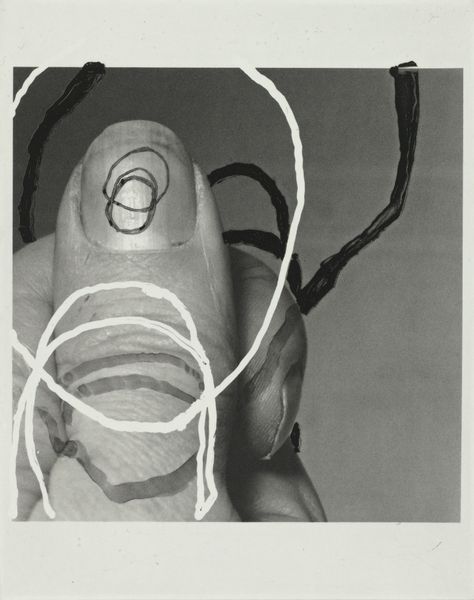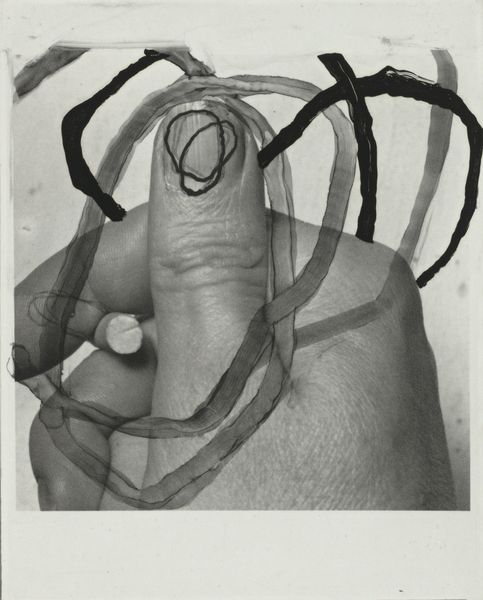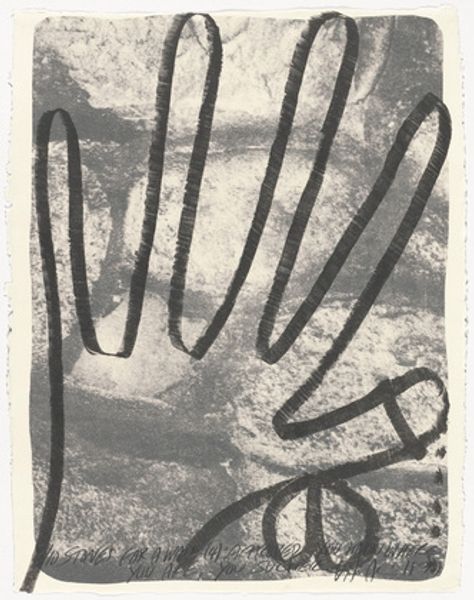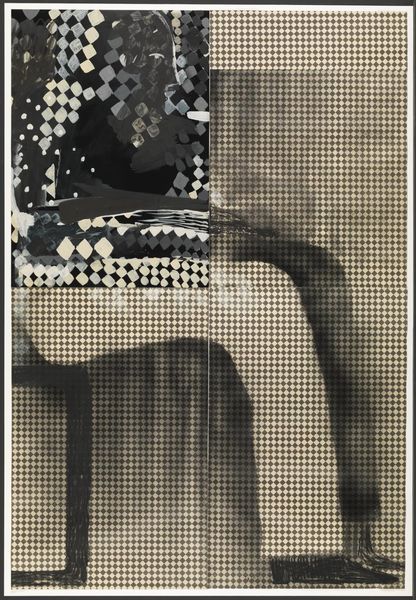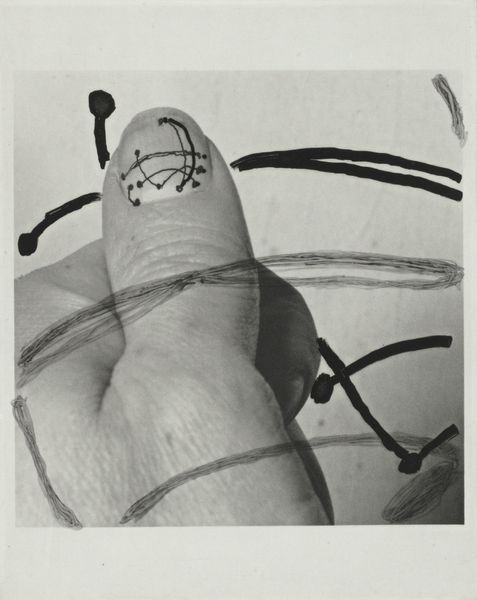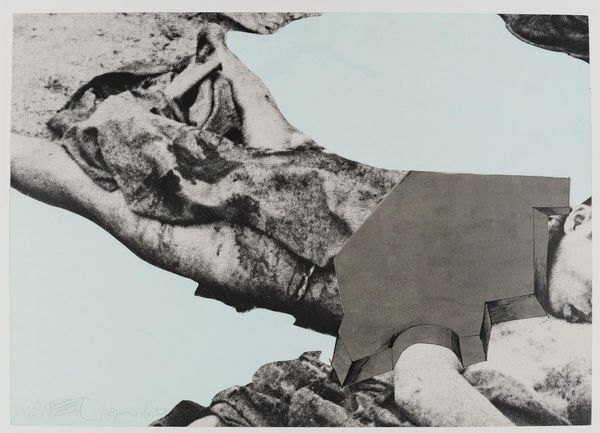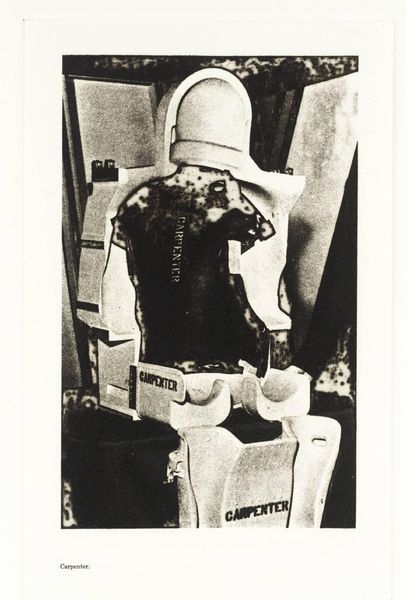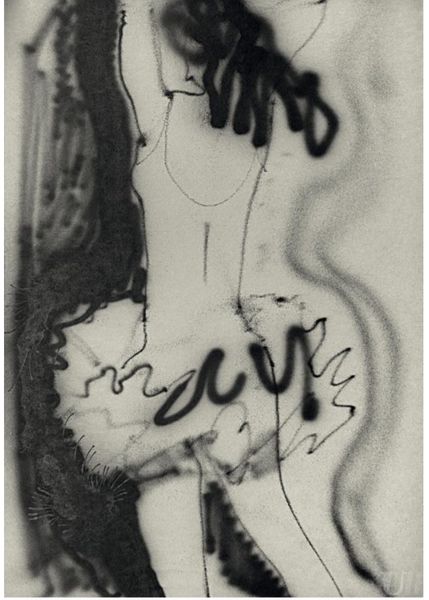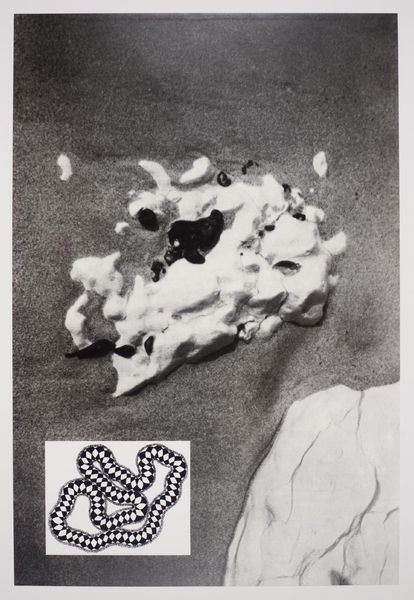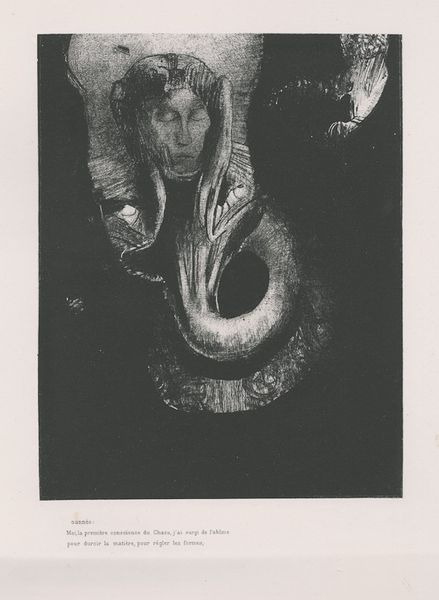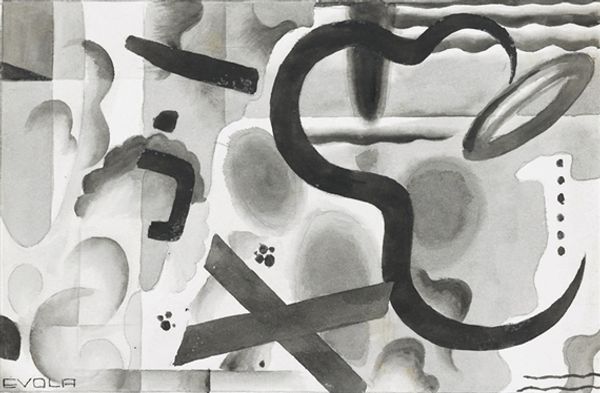
mixed-media, print, photography, sculpture
#
mixed-media
#
negative space
# print
#
sculpture
#
photography
#
geometric
#
sculpture
#
abstraction
#
line
Dimensions: image: 25 × 20 cm (9 13/16 × 7 7/8 in.) sheet: 31.6 × 24.2 cm (12 7/16 × 9 1/2 in.)
Copyright: National Gallery of Art: CC0 1.0
Curator: Al Taylor created this mixed-media piece, "B. (All Thumbs)" in 1997. It incorporates photography, printmaking, and sculpture elements. My immediate impression is how playfully disorienting it is. The composition teeters between recognizable and completely abstract. Editor: Disorienting is right! There's a visual tension between the sharp geometric lines, those looping gestures in the center, and what looks like a photographic element...the blurred mass beneath it all could almost be organic, maybe even representational? It challenges your expectations. Curator: Exactly! Taylor’s work often returns to these sorts of tensions. The interplay between geometric form and suggested organic shapes calls to mind cave paintings or even primitive renderings of hands, maybe suggesting an essential and basic human attempt to record ourselves, which has extended and is continuing to stretch over tens of thousands of years. Editor: And perhaps that impulse to document is frustrated here; the "all thumbs" in the title brings an air of ironic clumsiness. There's something profoundly human about failure to capture, and it’s also tied, in my mind, to issues around authorship, disability, or social roles associated with that sort of work. Curator: Yes, it raises intriguing questions about skill, intention, and even the symbolic significance of the hand itself—a recurring motif in art history that can simultaneously signify power, creation, and labor. Maybe even a deconstruction of how traditional, often white and male dominated art is “supposed to look” like a photograph with traditional drawing superimposed upon the likeness. Editor: Thinking about the context of the late 90s, during which the digital world started taking over more and more spaces, this mixed media piece may suggest a move away from relying entirely on technologically aided means for artmaking or, perhaps, it can also be understood as an early contemplation of our current technological overload that has removed many people away from a dependence on physical actions or dexterity. Curator: So much food for thought, seeing a work which is, on the one hand, very simple and very reduced, and seeing that simple thing lead to some quite sophisticated questions. Editor: Agreed. And now I am left to rethink our roles with artmaking and to consider how this artwork is not simply about making art but engaging in visual meaning and knowledge production overall.
Comments
No comments
Be the first to comment and join the conversation on the ultimate creative platform.
